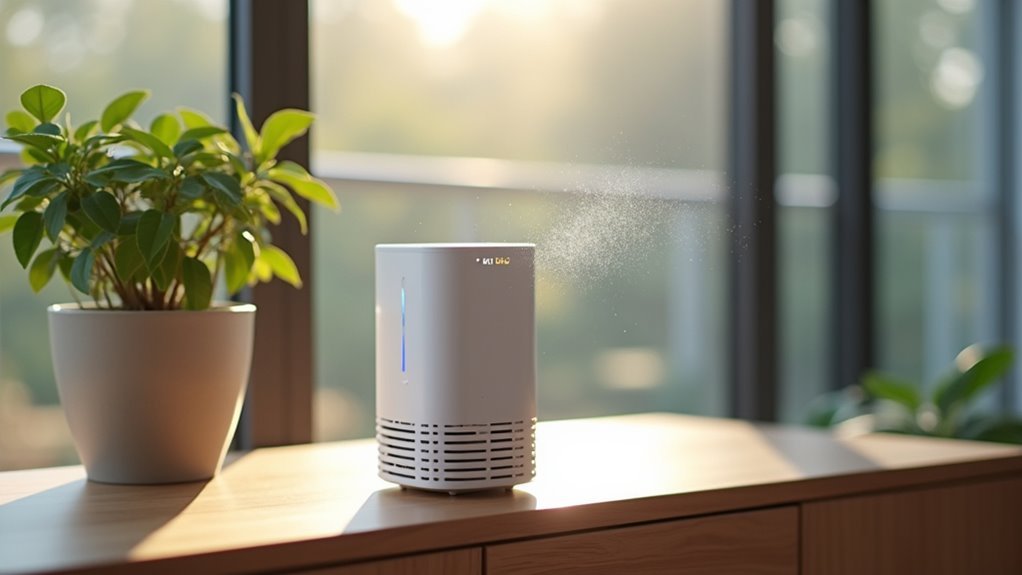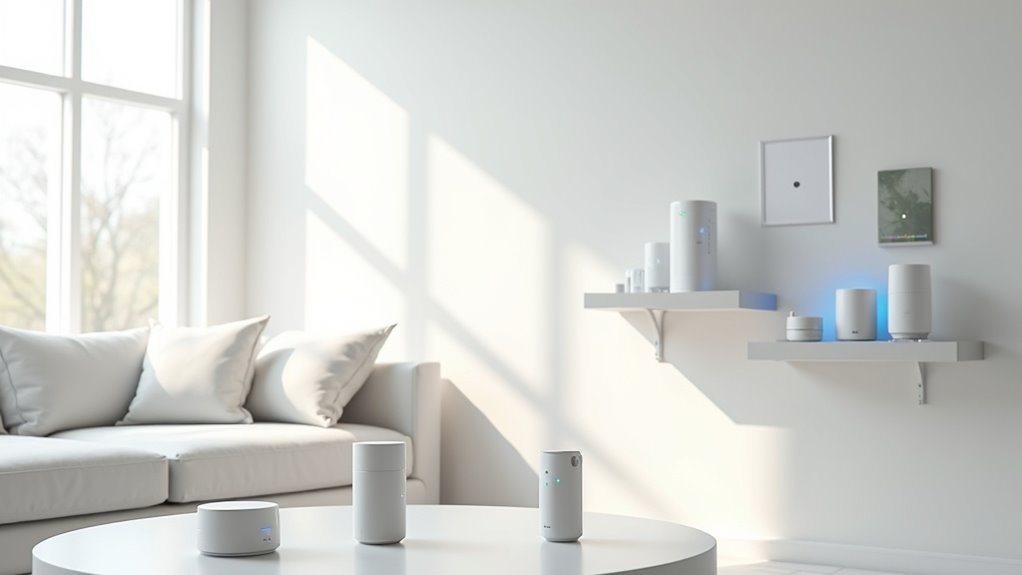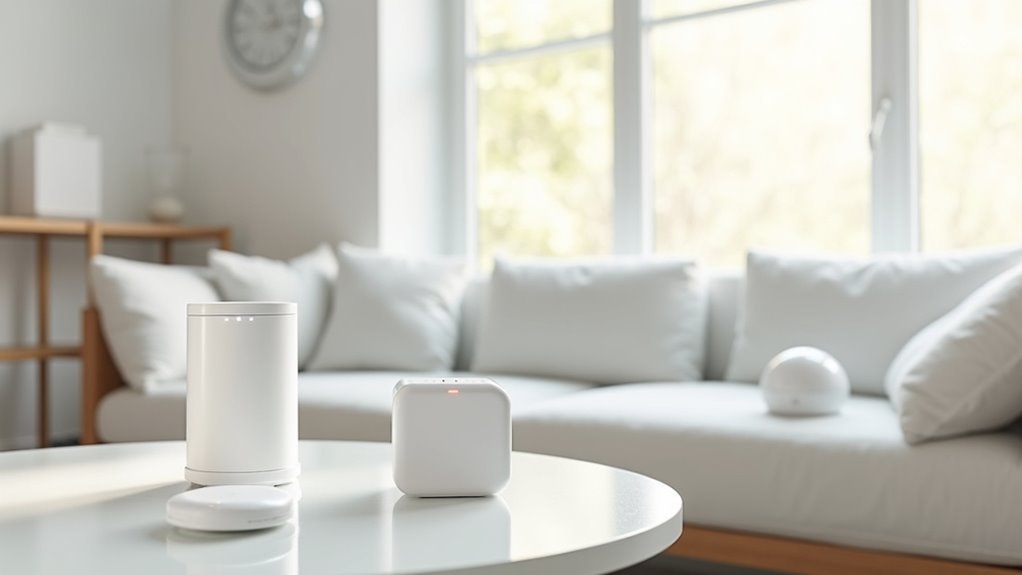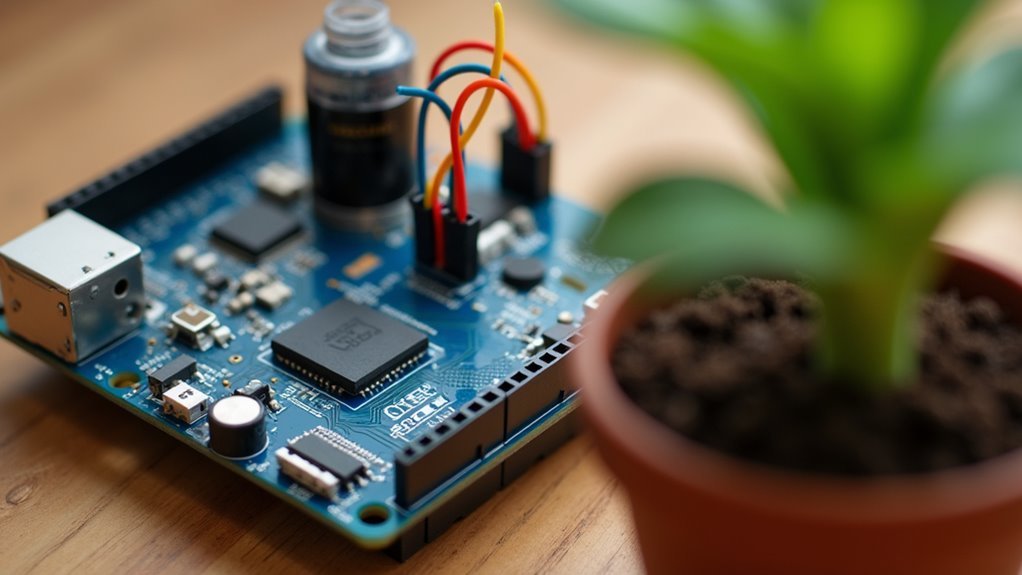You’re breathing indoor air that’s often two to five times more polluted than outdoor air, yet most homeowners remain unaware of invisible contaminants lurking in their living spaces. Whether it’s volatile organic compounds from cleaning products, carbon dioxide buildup, or microscopic particles from cooking and dust, these pollutants silently impact your health and comfort. The right air quality detector can transform your home into a healthier environment, but choosing among dozens of options requires understanding what separates effective monitors from marketing gimmicks.
Essential Features to Look for in Smart Home Air Quality Monitors

When you’re shopping for a smart home air quality monitor, you’ll want to prioritize devices that track multiple pollutants simultaneously. The best indoor air quality monitors measure PM2.5, volatile organic compounds (VOCs), carbon dioxide (CO2), temperature, and humidity, giving you thorough insights into indoor pollutants affecting your health.
Look for monitors with high-quality air quality sensors, particularly NDIR technology for CO2 detection, which delivers accurate readings over time.
You’ll also need a user-friendly app that provides real-time data, sends alerts, and displays historical trends for effective air quality management.
Choose devices with clear displays featuring color-coded indicators that show current conditions at a glance.
Smart home integration capabilities enable automated responses, like adjusting air purifiers when pollution levels rise, maximizing your home’s air quality control system.
Top-Rated Air Pollution Detection Devices for DIY Installation
Now that you understand what features matter most, you can choose from several outstanding air pollution detectors that you’ll easily install yourself.
The Airthings View Plus stands out among the best air quality monitors, tracking carbon dioxide (CO2), particulate matter, VOCs, and more with seven-year sensor longevity.
The Airthings View Plus delivers comprehensive air quality monitoring with impressive seven-year sensor durability for long-term home protection.
For precise CO2 detection, the SAF Aranet 4 uses NDIR technology and provides seven-day trend analysis.
Budget-conscious homeowners appreciate the Govee Smart Air Quality Monitor at $40, perfect for basic indoor air quality index monitoring.
The PurpleAir Zen excels for indoor/outdoor use with EPA AQI color coding that’s easy to read.
Finally, the portable QP Lite offers versatility for detecting various air quality issues while traveling.
Setting Up Your Home Air Quality Monitoring System

After selecting your ideal air quality monitor, you’ll need to position it strategically to capture accurate readings throughout your home. Place your indoor air quality monitor 3-6 feet off the ground, away from windows, doors, and HVAC vents to guarantee precise CO2, VOCs, and humidity levels detection.
Connect your device to Wi-Fi for real-time data access through companion apps. This enables immediate alerts when air quality monitoring detects concerning pollution sources.
| Poor Air Quality Impact | Improved Air Quality Benefits |
|---|---|
| Respiratory irritation and allergies | Clean, breathable air for your family |
| Headaches and fatigue | Enhanced sleep and energy levels |
| Long-term health complications | Peace of mind and healthier living |
Regularly calibrate your monitor per manufacturer instructions. Use collected data to implement solutions like increased ventilation and air purifiers for ideal indoor environments.
Frequently Asked Questions
What Is the Best Air Quality Monitor for Home?
You’ll want the Airthings View Plus as it’s considered one of the best home air quality monitors, tracking seven factors including CO2, PM2.5, and VOCs with excellent app functionality.
What Is the Best CO2 Monitor for a House?
You’ll want the SAF Aranet 4 for your house’s CO2 monitoring. It uses precise NDIR sensor technology, provides reliable alerts for elevated levels, and helps prevent cognitive impairment from poor air quality.
What Is the Best Way to Check the Air Quality in Your Home?
You’ll get the most accurate readings by using a high-quality indoor air monitor like the Airthings View Plus, which measures CO2, PM2.5, and VOCs simultaneously for thorough home air quality tracking.
How Do I Choose an Indoor Air Quality Monitor?
You’ll want to select a monitor that measures multiple pollutants like PM2.5, VOCs, and CO2. Choose devices with high-quality sensors, user-friendly apps, and automation capabilities for thorough home air quality management.





Leave a Reply